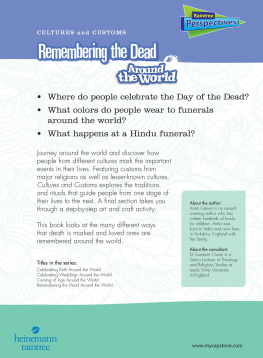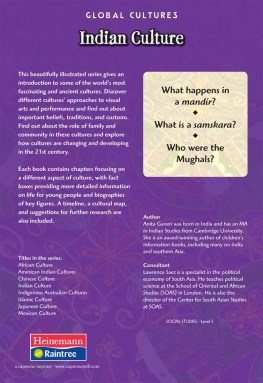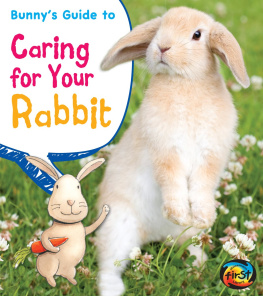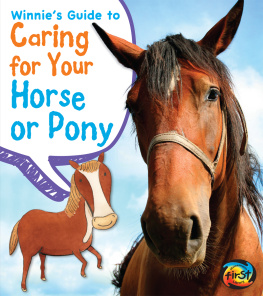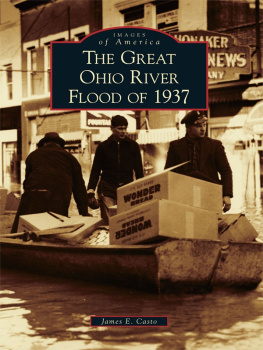Anita Ganeri - Flood!
Here you can read online Anita Ganeri - Flood! full text of the book (entire story) in english for free. Download pdf and epub, get meaning, cover and reviews about this ebook. year: 2006, publisher: Encyclopaedia Britannica;Britannica Digital Learning, genre: Art. Description of the work, (preface) as well as reviews are available. Best literature library LitArk.com created for fans of good reading and offers a wide selection of genres:
Romance novel
Science fiction
Adventure
Detective
Science
History
Home and family
Prose
Art
Politics
Computer
Non-fiction
Religion
Business
Children
Humor
Choose a favorite category and find really read worthwhile books. Enjoy immersion in the world of imagination, feel the emotions of the characters or learn something new for yourself, make an fascinating discovery.

- Book:Flood!
- Author:
- Publisher:Encyclopaedia Britannica;Britannica Digital Learning
- Genre:
- Year:2006
- Rating:3 / 5
- Favourites:Add to favourites
- Your mark:
- 60
- 1
- 2
- 3
- 4
- 5
Flood!: summary, description and annotation
We offer to read an annotation, description, summary or preface (depends on what the author of the book "Flood!" wrote himself). If you haven't found the necessary information about the book — write in the comments, we will try to find it.
Flood! describes how and why floods happen.
Flood! — read online for free the complete book (whole text) full work
Below is the text of the book, divided by pages. System saving the place of the last page read, allows you to conveniently read the book "Flood!" online for free, without having to search again every time where you left off. Put a bookmark, and you can go to the page where you finished reading at any time.
Font size:
Interval:
Bookmark:

E-book published in 2012 by Encyclopdia Britannica, Inc., in association with Arcturus Publishing Limited, 26/27 Bickels Yard, 151-153 Bermondsey Street, London SE1 3HA. Britannica, Encyclopdia Britannica, and the Thistle logo are registered trademarks of Encyclopdia Britannica, Inc.
ISBN: 978-1-61535-649-2 (e-book)
This edition first published by Arcturus Publishing
Distributed by Black Rabbit Books
123 South Broad Street
Mankato
Minnesota MN 56001
Copyright 2006 Arcturus Publishing
All rights reserved
Library of Congress Cataloging-in-Publication Data
Ganeri, Anita. 1961
Flood! / by Anita Ganeri
p. cm. -- (Natures fury)
Includes index
1. Floods--Juvenile literature. I. Title
GB1399.G36 2007
363.3493--dc22
2006022606
9 8 7 6 5 4 3 2
Editor: Alex Woolf
Design: Minds Eye Design
Picture Research: Shelley Noronha
Picture credits:
Corbis: cover and 8 (Reuters/Jayanta Shaw), 11 (George H. H. Huey), 12 (Alberto Pizzoli),
16 (Kjeld Duits/epa), 17 (Kapoor Baldev/Sygma), 18 (Alessandro della Bella/epa),
20 (Howard Davies), 22 (Sergey Ilnitsky/epa), 23 (Bettmann), 24 (Themba Hadebe/epa),
25 (John Gress/Reuters), 26 (Elvis Barukcic/epa), 29 (Alexandra Winkler/Reuters).
NASA Visible Earth: 9, 19 (Jacques Descloitres, MODIS Rapid Response Team, NASA/GSFC).
Rex Features: 4 (Sipa Press), 5 (Stewart Cook), 10 (Sipa Press), 13 (Sipa Press),
15 (Sipa Press), 21 (The Travel Library), 27 (Nicholas Bailey).
Science Photo Library: 6 (Gary Hincks), 7 (Wayne Lawler),
14 (Carlos Munoz-Yague/LDG/Eurelios), 28 (Paul Rapson).
A flood happens when water from a river or the sea covers dry land. But a flood is far more powerful than this description makes it sound. Heavy rains can turn gently flowing rivers into terrifying torrents that sweep across the landscape, submerging it under feet of muddy water. Powerful storms and giant waves can send seawater cascading over low-lying coasts, drowning towns, harbors, and people.
Killer floods
Floods kill more people than earthquakes, famines, volcanic eruptions, and other natural disasters. Over the centuries, tens of millions of people have died in floods. A single, huge flood can bring catastrophe, killing millions of people. Floods are more frequent than other natural disasters, and they cause as much damage to property as all other natural disasters put together. Fast-flowing floodwater washes away buildings, cars, trees, and roads. Even stagnant floodwater damages buildings, electricity cables, and other infrastructure. Floods also alter the landscape by eroding soil, carrying it away, and dumping it elsewhere.

Flooding in Meissen, Germany, in 2002. Heavy summer rains caused the river Elbe to overflow its banks and spread onto the surrounding land.
Flood types
There are three main types of flood: river floods, flash floods, and coastal floods. Most floods happen on rivers, when excess water overflows from a river onto flat land called the floodplain. The most devastating floods happen along the worlds great rivers, such as the Mississippi in the United States, the Ganges in India, and the Huang Ho in China. Flash floods happen suddenly when intense rain falls over a small area. Coastal floods happen when storms and tsunamis raise the sea level above the level of the coast.
Despite being so destructive, floods can also bring benefits. The soil on river floodplains is extremely fertile, making them good places to grow crops. This is why millions of people around the world choose to live on floodplains, despite the risk from flooding.

Car roofs poke above floodwater in New Orleans. The flooding was caused by Hurricane Katrina in 2005.
 CASE STUDY
CASE STUDY
The biblical flood
In the Bible, God sends a great flood that covers the whole earth. Only a man called Noah and his family survive. There are many other, similar legends of great floods. They may be based on a real flood that happened about 5,000 years ago in modern-day Iraq, where archaeologists found a thick layer of sediment deposited by massive flooding.
B efore looking at why floods happen on rivers, it is useful to understand how rivers flow. The water on earth is constantly circulating between the oceans, the atmosphere, and the land. This circulation of water is called the water cycle. Water evaporates into the atmosphere from the oceans and land in the form of water vapor. When the vapor rises and cools, it forms water droplets that fall as rain and other precipitation. Some of the rain forms rivers and flows back across the land to the sea.
Soaking in and running off
Rain either soaks into the ground or flows across the ground, when it is called runoff. The amount of water that soaks in or runs off depends on the type of ground, how wet the ground is, and how heavy the rain is. Water soaks into some soils faster than others. For example, it soaks quickly into sandy soil but very slowly into clay. If rain falls so heavily that not all of it can soak in, the surplus rain sits on top of the soil or runs off it downhill. When the ground becomes saturated (soaked with water), all the rain runs off.

The flow of water down a river (center) is part of the water cycle. Most of this water starts out in the sea and then returns to the sea through the mouth of a river.
Forming a floodplain
Runoff finds the easiest way downhill. It collects into streams and rivers. On hills and mountains, rivers erode V-shaped valleys into the landscape. The eroded soil and rock is washed downstream. When the river reaches lowland areas, the river naturally meanders (bends) from side to side. Over time, the meandering river slowly cuts a wide valley. During floods, the whole valley fills with water. Some of the soil and rock transported by the river is deposited. It builds up layers to make the bottom of the valley flat. The flat area on each side of the river is called the floodplain.

Meanders on the river Bynoe in Australia. The flat area around the river, known as the floodplain, is formed from soil and rock left after floods.
 GROUNDWATER
GROUNDWATER
Water that soaks into the ground is known as groundwater. It seeps slowly down through the ground, saturating the rock below. The top of the saturated layer is known as the water table. In places, groundwater comes out of the ground and forms springs. Many streams and rivers start at springs. It is groundwater from springs that keeps rivers flowing even after long spells of dry weather.
R ivers often flood at the same time each year. These seasonal floods are caused by high seasonal rainfall or by melting snow in major mountain ranges. Seasonal rains fall at different times of the year in different climates. In South Asia seasonal floods are caused by heavy summer rains. The amount of water flowing down rivers can increase by about 20 times during this wet season.
Next pageFont size:
Interval:
Bookmark:
Similar books «Flood!»
Look at similar books to Flood!. We have selected literature similar in name and meaning in the hope of providing readers with more options to find new, interesting, not yet read works.
Discussion, reviews of the book Flood! and just readers' own opinions. Leave your comments, write what you think about the work, its meaning or the main characters. Specify what exactly you liked and what you didn't like, and why you think so.

